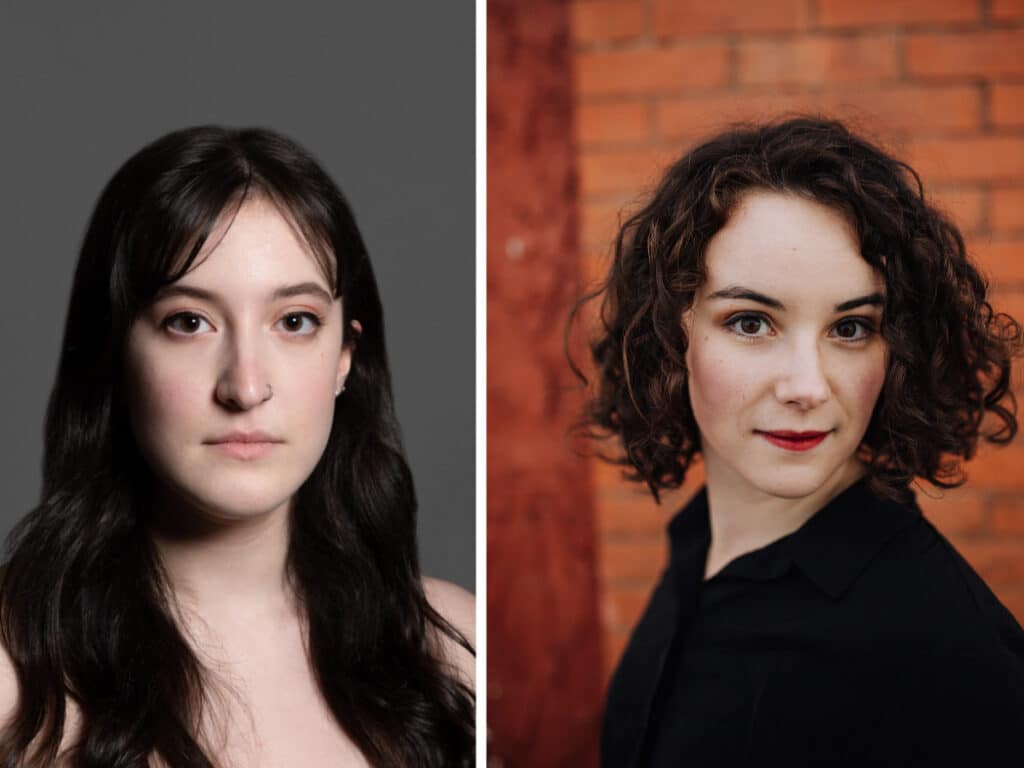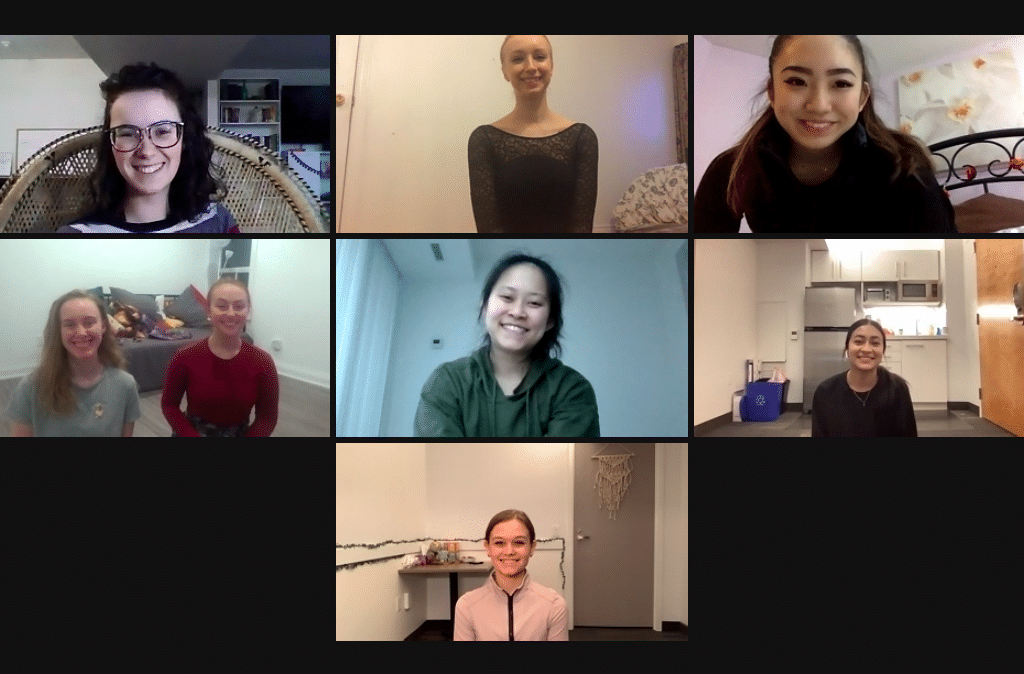
Each year, George Brown Dance invites alumni to return as choreographers to create works on current students. Interested choreographers submit a proposal for a project and if selected, move into a creation process over the course of a semester. The program offers choreographers a safe space to explore ideas and develop their choreographic practice and voice. Current students have the opportunity to meet alumni, engage with dancers across all GBD programs, and immerse themselves in the creation of a work from start to finish which is often a new experience for many of them.
COVID-19 threw a wrench into a lot of things, but GBD has returned to the studios for classes and is thrilled to be able to continue the Ensemble program virtually. This years’ alumni choreographers are Alexandra Woodley (P101 & P105) and Madeleine Martin (P105). We caught up with them to learn about their projects, how the process has been going, and what they have learned along the way.
“This program showed me that everything I need to complete a final product that is honest is within the dancers and our bond. They are each so incredible, and any challenges in this process were solved by chatting with them, learning from each other, and being inspired by all they have to offer.”
Where are you currently working from?
Alexandra Woodley: I am currently living and working out of High River in Southern Alberta.
Madeleine Martin: North Vancouver, BC.
What is the focus and theme of your piece?
AW: My work for Ensemble began as an exploration into the cognitive, physical and creative struggles that each dancer faces and the accommodations the individual makes in order to succeed. I was inspired by my personal journey to embrace my neurodiversity — namely dyslexia — over the past year. I was curious to see if other dancers have conscious or subconscious habits resulting from cognitive and physical struggles and what accommodations they have developed as a means to succeed. Through the creation process and with the generous vulnerability of the dancers involved, I learned about struggles they all face concerning injury, illness, anxiety, ADD/ADHD, and their perceptions of intelligence and personal value. Ultimately this work became less about accommodation, habits and success, and more about acceptance, support and the opportunity to express individual struggles together through movement, without the need for any life altering resolution.
MM: It’s a series of short stories, each with their own theme and narrative. On the surface they seem pretty clear cut and simple, like a mysterious drip in your house or looking for a midnight snack, but as the creation process progressed each story slowly developed to be so much more.
Have you ever choreographed/created virtually?
AW: I have hosted and participated in a few virtual choreographic/creative sessions throughout the pandemic. However, this is the largest scale I have done it on. With nine dancers, different schedules, different time zones, and an end presentation, this process has felt entirely new.
MM: I have choreographed and created works before, but this is the first time virtually.

What has this process been like as a choreographer?
AW: This process has been a challenge. I have had to reanalyze why and how I take each step of the creation process. However, the difficulty has really created a beautiful and resilient atmosphere within each rehearsal. Each dancer is involved because they want to be and not because it is easy to be, and I can keenly feel that from each of them as the choreographer. The virtual platform can be disembodying, making the experience challenging both from a learning perspective and in the performance and communication as of dance. This makes each movement we create that much more monumental. Not being in person takes away from the ability to feed off each other’s energy and to contribute to the creative atmosphere. To combat this each dancer and myself has had to work so much harder and truly develop their personal work ethic and dance style to contribute to the overall success of the project. This process is difficult but so rewarding and enlightening.
MM: Before I began this creation process, I knew it would have to be as collaborative as possible since I am in a completely different time zone. I also knew that I could not hold on to any preconceived idea or vision because the dancers may interpret it or envision it in a completely different way, but I think that’s what made this process so fun. My dancers took my ideas and ran wild with them, bringing back new ideas that I may never have come up with. In working together, we made something neither party would have been able to make on their own.
Alex, this is your second time participating in the Ensemble program as a choreographer. How has this process differed from the last time you choreographed for Ensemble?
AW: When I previously created for GBD Ensemble there were so many different factors to take into account. My work was made up of movement in solos, duets, and groups of all sizes. I planned each transition of song and the movement of each dancer in and out of the performance space. However, most of these creative aspects have been removed in a virtual platform. I don’t have to create entrances and exits. I am limited to mainly solo works and those works must fit into whatever space the dancer has available. I have to have faith and trust my dancers with filming themselves and asking for help via unmuting themselves when they are lost while learning on Zoom. However, while online has removed many creative aspects, it has really focused the importance of movement, intention and genuine expression. Each step of each individual now has such emphasis behind it.
On a practical note: I usually create all my movement for a piece without music or counts and then find music to compliment the movement and theme of the piece. I did the same thing for this online program, which was way harder. Once I had music chosen it acted as a guide providing another connection between me and the dancers. This helped to convey to the dancers the direction I was taking the work in. In the future I will definitely approach that part of creation online differently by introducing music earlier.
This program always teaches alumni so much. What is the biggest thing you have learned through this process?
AW: This program has taught me to be patient with myself and trust my dancers. I always worry that I am not moving fast enough or that the theme and intention of my work isn’t shining through strongly enough and early enough. This program showed me that everything I need to complete a final product that is honest is within the dancers and our bond. They are each so incredible, and any challenges in this process were solved by chatting with them, learning from each other, and being inspired by all they have to offer. While doing the program a second time I learned the importance of allowing the theme and work to change organically based on what the dancers were feeling and expressing.
MM: Always have trust in the creation process. Even when you have new hurdles to work around like a glitching zoom software or terrible WIFI, trust that something great will still come out of it.
Written by Elise Tigges.
